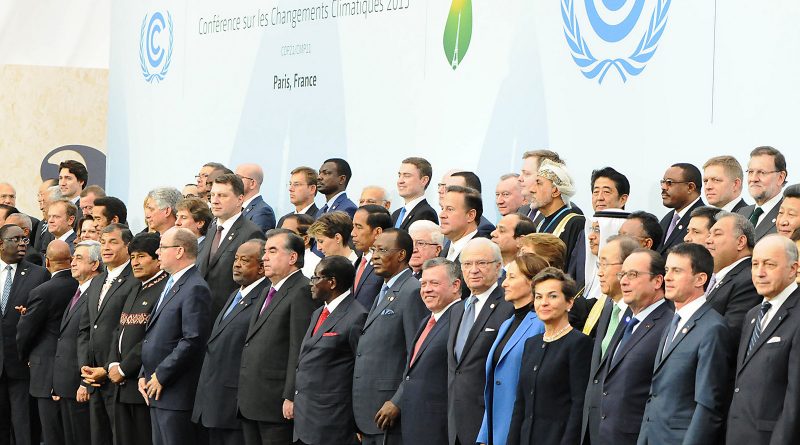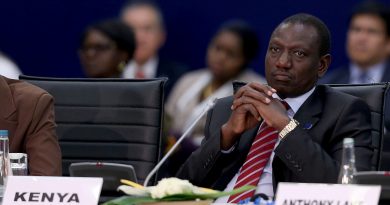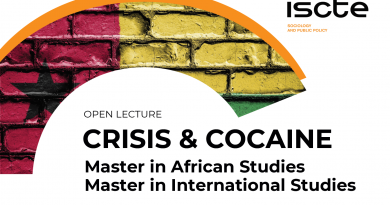Climate Change Talks: Will We Always Have Paris?
A brief history of climate change accords
The new instrument that aims to reduce the advance of climate change on the planet – the Paris Agreement – entered into force on 4 November 2016.
It has been a long way since we first heard, and with much concern, about the effects of greenhouse gases (GHG) on the atmosphere in 1988. The Kyoto Protocol – established in 1997 and in force since February 2005 – is a complementary treaty to the United Nations Framework Convention on Climate Change (UNFCCC), setting emission reduction targets for developed countries and those with transition economies, considered to have historical responsibility for current climate changes.
During the first commitment period (2008-2012), 37 industrialized countries and the European Union (EU) committed themselves to reducing GHG emissions to an average of 5% over 1990 levels. In the second period (2013-2020), the Parties committed to reducing GHG emissions by at least 18% below 1990 levels. Each country has negotiated its own emission reduction targets based on ability to achieve it over the period considered.
Why previous agreements did not work
According to Annalisa Savaresi, on her article The Paris Agreement: a new beginning? (2015), “the reason international climate governance has proven to be such an intractable affair relates both to the enormity of the challenge at hand and to the gaping disparity in states’ capacity to tackle climate change. There is an inherent disproportion both in the projected impacts of climate change across countries and in the means to cope with such impacts, and to contribute to climate change mitigation.” The author also mentions that a major flaw of the Kyoto Protocol was to have been built “upon the static differentiation between ‘developed’ and ‘developing’ countries.” Also, the fact that the US and Canada are not part of the Protocol has left the EU and other countries, such as Australia, Norway or Switzerland, in a position to be the main parties and most interested in a pleasant environment.”
“But Copenhagen spectacularly failed to deliver that out-come. Its collapse was the result of circumstances that contrast vividly with those that enabled Paris to succeed,” mencioned Peter Christoff (2016) on his article about The promissory note: COP 21 and the Paris Climate Agreement.
Between 7-18 December 2009, the Copenhagen Summit took place (2009 United Nations Conference on Climate Change or COP-15), which brought together world leaders to discuss how to respond to climate change. A kind of state of the art after the first five years of Kyoto Protocol – which was considered by the world press to have been a controversial conference that did not reach the desired discussion plans, only serving to mark a weak political statement.
It is also necessary to underline the importance of the first Conference of the Parties (COP-1) in Montreal in 2005, the 2007 Bali Action Plan, the 2010 Cancun Agreements, the 2012 Durban Platform for Enhanced Action, and the 2014 COP-20 in Lima. “Ahead of the Paris Climate Change Conference, many evoked memories of the difficult negotiations that preceded the Copenhagen Climate Change Conference in 2009,” referred Savaresi.
What Paris brings to the table
The Paris Agreement – considered a substitute for the Kyoto Protocol – is a treaty under the UNFCCC governing carbon dioxide emission reduction measures from 2020, negotiated during COP-21 and adopted on 12 December 2015. Laurent Fabius, leader of the conference stated that the plan is ambitious and balanced and marks an historic turning point in the goal of mitigating global warming.
Marked by tensions between the US and the group of the so called ’emerging economies’ (Brazil, South Africa, India, and China), this instrument gives visibility for the first time to “the role of non-state actors in addressing climate change,” Savaresi said. The goals of this Agreement include:
- “the increase in the global average temperature to well below 2°C above pre-industrial levels and to pursue efforts to limit the temperature increase to 1.5°C above pre-industrial levels, recognizing that this would significantly reduce the risks and impacts of climate change;”
- to increase “the ability to adapt to the adverse impacts of climate change and foster climate resilience and low greenhouse gas emissions development, in a manner that does not threaten food production;”
- and to make “finance flows consistent with a pathway towards low greenhouse gas emissions and climate-resilient development.”
Christoff also points out in his article that the Paris Agreement was a product of EU interests because it preferred a new climate change control instrument, rather than reformulating the Kyoto Protocol. On 22 April 2016, at the UN Headquarters in New York, 175 States signed and ratified the Paris Agreement.
An effort has been made. It should be noted that, in 1990, the US accounted for 22% of global CO2 emissions, the EU accounted for 19%, and China and India for 1% and 0.3%, respectively (together, they emitted 42% of total emissions). Already in 2004, China overtook the US as the main emitter of CO2. Ten years later, China accounted for 30% of emissions, the US for 15%, the EU for 10%, and India for 6.5% – the latter four accounted for 61% of global CO2 emissions.
The future uncertainty of climate change
It is uncertain whether this will succeed – especially after US President-elect, Donald Trump, has shown intention to abandon the agreement as soon as possible. Savaresi argues that “though not perfect, the agreement represents a fairly balanced compromise, probably the best that could be achieved at this time and in these circumstances,” but we cannot be “naive to expect the Paris Agreement to be a miraculous cure for all the maladies of the climate regime.”
World leaders during the Paris Climate Change Conference, Photo by UNclimatechange / CC BY 2.0
![]() This work is licensed under a Creative Commons Attribution-NonCommercial-ShareAlike 4.0 International License.
This work is licensed under a Creative Commons Attribution-NonCommercial-ShareAlike 4.0 International License.




